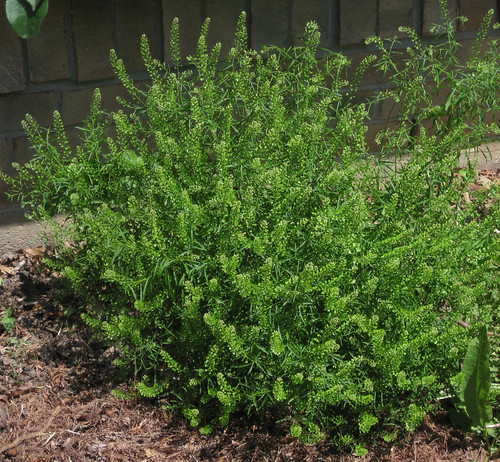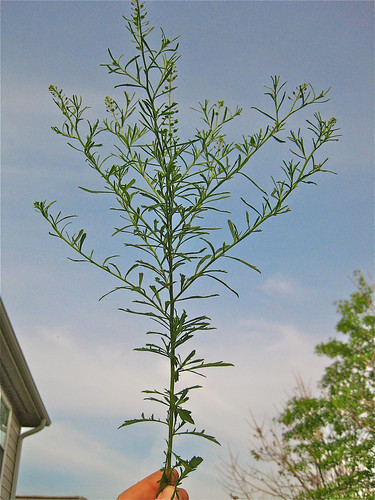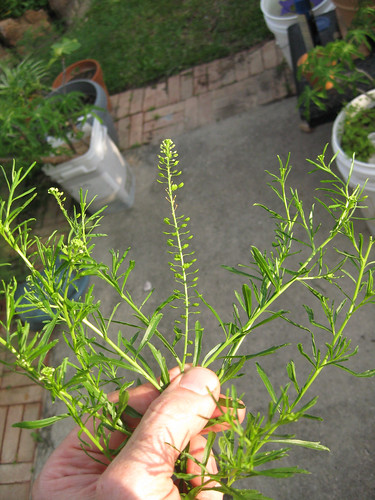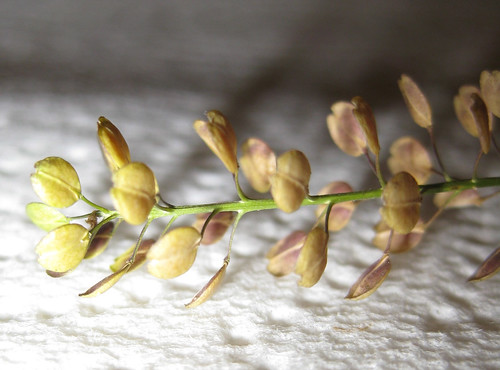Abundance: common
What: seeds, young leaves
How: seeds raw, leaves raw or cooked
Where: sunny disturbed areas
When: early spring through late winter
Nutritional Value: minerals
Danger: Pennycresses are hyperaccumulators of minerals. If the soil is contaminated with toxic metals these plants will suck them up.
Peppergrass plant.

One peppergrass plant. It has a distinctive silhouette.

Close-up picture of the plant.

Close-up of seed pods.

Even closer close-up of seed pods.

Texas distribution, attributed to U.S. Department of Agriculture. The marked counties are guidelines only. Plants may appear in other counties, especially if used in landscaping.

North American distribution, attributed to U.S. Department of Agriculture.

North America has over 100 different species of Lepidium and Texas has 23. They are all very similar in appearance and edibility. The seeds have a spicy/peppery taste similar to radishes. I usually just bite the young, green seed-stalks off the plant. The young leaves also have the horse-radishy taste but by the time the seeds appear the leaves have become to power-tasting for most people to eat. The young, tender seed pods also add a bit of a kick to salads.
These plants seem to thrive in waste areas. I see them growing along all the major roads and freeways in Houston. They even grow out of the cracks in the concrete barriers at the toll road toll booths starting in late winter (February) into early summer (May-June). Their shape is distinctive, look for a single stalk that branches out into multiple, "bumpy" stalks.
Buy my book! Outdoor Adventure Guides Foraging covers 70 of North America's tastiest and easy to find wild edibles shown with the same big pictures as here on the Foraging Texas website.

